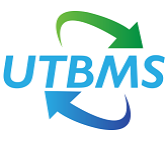In 2013 the LEDES Oversight Committee ratified Revised Expense Codes as an update to the original Activity Codes issued by the ABA in 1997.
The LOC 2013 Revised Expense Codes begin with the letter designator “X” to distinguish usage from the original ABA Expense Codes. This was necessary because of the frequency of customization of the original ABA Expense Codes by clients and vendors involved in legal ebilling. Many new codes have been added, reflective of the customized codes used by clients at the time the project was undertaken and which allow greater specificity by clients in terms of the expenses they will or will not reimburse.
Codes between X900 and X998 have been reserved for customization by clients. The LOC requests that clients only customize using the codes within this numbering hierarchy, allowing the LOC to modify the expense codes with greater ease in the future, if necessary.
2013 LOC Revised UTBMS Expense Codes Rev 1
2013 LOC Revised UTBMS Expense Codes w mapping Rev 1
The LOC suggests that clients with existing ebilling implementations that want to migrate to the revised expense codes consider giving legal vendors at least a four month phase-in cycle before rejecting invoices containing the original expense codes.
Typically expenses are recorded using the legal vendor’s internal coding schema. The legal vendor’s financial or billing manager maps a translation of their internal codes to the codes mandated by each client, with the client codes inserted at the time a LEDES invoice file is created. As such, except for updating the mapping process, usage of the new expense codes does not need to be assimilated by all timekeepers at a firm.

